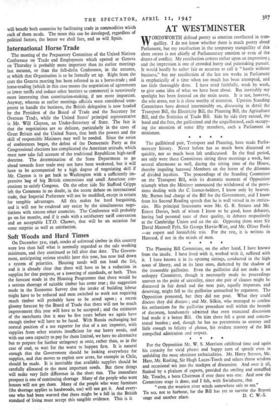Soft Woods and Hard Times
On December 31st, 1946, stocks of softwood timber in this country were less than half what is normally regarded as the safe working minimum, and they continued to fall after that date. The Govern- ment, anticipating serious trouble later this year, has now laid down a system of priorities. Housing needs will not head the list, and it is already clear that there will have to be a reduction in supplies for that purpose, or a lowering of standards, or both. Thus the forecast made in the Housing Programme that there would be a serious shortage of suitable timber has come true ; the suggestion made in the Economic Survey that the intake of building labour might have to be reduced and men switched to work not requiring much timber will probably have to be acted upon ; a recent gloomy forecast by the Board of Trade that there will not be much improvement this year will have to be accepted ; and the estimates of the merchants that it may be five years before we again have enough timber will have to be faced. With Russia exchanging her normal position of a net exporter for that of a net importer, with supplies from other sources insufficient for our heavy needs, and with our own capacity to pay for them limited, we have no alternative but to prepare for further stringency at once, rather than, as in the case of coal, to wait for the worst to happen first. It is natural enough that the Government should be looking everywhere for supplies, and that moves to exploit new areas, for example in Chile, should be made. It is inevitable that available supplies should be carefully allocated to the most important needs. But these things will make very little difference in the short fun. The immediate prospect is one of continuing shortage Many of the people who want houses will not get them. Many of the people who want furniture (the shortage applies to hardwoods, too) will not get it. And every- one who had been warned that there might be a fall in the British standard of living must accept this tangible evidence. This is it.


































 Previous page
Previous page